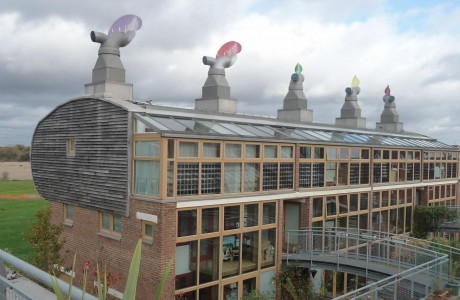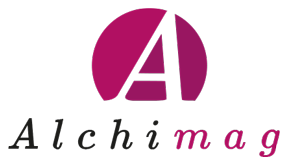Karl Lagerfeld, Chanel's creative director, is giving birth to her first interior design project. Fashion icon, visionary artist and…

BedZED (Beddington Zero Energy Development) is the UK’s first and largest carbon-neutral eco-community and is located in Sutton, a residential town 40 minutes South East from London.
BedZED consists of 82 residential homes with a mixture of tenures – 34 for outright sale, 23 for shared ownership, 10 for key workers and 15 at affordable rent for social housing – and 1’600 square metres of work space, an onsite shop, café, sport facilities, health centre and childcare facilities with a further 14 galleried apartments for outright sale. Residents have been living at BedZED since March 2002 and currently BedZed is home to 220 residents.
 The BedZED design concept was driven by the desire to create a net ‘zero fossil energy development‘, one that will produce at least as much energy from renewable sources as it consumes. Only energy from renewable sources is used to meet the energy needs of BedZED the development is therefore a carbon neutral development – resulting in no net addition of carbon dioxide to the atmosphere.
The BedZED design concept was driven by the desire to create a net ‘zero fossil energy development‘, one that will produce at least as much energy from renewable sources as it consumes. Only energy from renewable sources is used to meet the energy needs of BedZED the development is therefore a carbon neutral development – resulting in no net addition of carbon dioxide to the atmosphere.
 BedZED was developed by the Peabody Trust in partnership with Bill Dunster Architects (ZedFactory); ARUP and BioRegional Development Group, environmental consultants.
BedZED was developed by the Peabody Trust in partnership with Bill Dunster Architects (ZedFactory); ARUP and BioRegional Development Group, environmental consultants.
Transport: A green transport plan promotes walking, cycling and use of public transport. BedZED has good public transport links, including two railway stations, two bus routes and a tramlink. BedZED was the first low car development in the UK to incorporate a car club. A ‘pedestrian first’ policy with good lighting, drop kerbs for prams and wheelchairs and a road layout that keeps vehicles to walking speed. The BedZED project introduced the first legally binding Green Transport Plan as a condition of planning permission. On-site charging points for electric cars are available in Sutton town centre.
Energy: Buildings are constructed from thermally massive materials that store heat during warm conditions and release heat at cooler times. BedZED houses are arranged in south facing terraces to maximise heat gain from the sun, known as passive solar gain. 777 square meters are covered with solar panels. Each terrace is backed by north facing offices, where minimal solar gain reduces the tendency to overheat and the need for air conditioning. BedZED homes and offices are fitted with low energy lighting and energy efficient appliances to reduce electricity requirements. BedZED receives power from a small-scale combined heat and power plant (CHP). The heat from the CHP provides hot water, which is distributed around the site via a district heating system of super-insulated pipes. To enable residents and workers to keep track of their heat and electricity use, meters are mounted in each home and office kitchen.
Water: Water use is reduced to 76 litres/day; out of which 18% represents rainwater or recycled water; use of aerated taps, low flush toilets, smaller bathtubs. One innovation at BedZED is the use of a reed-water biofiltration system that purifies blackwater into graywater for use in non-potable applications, such as toilet flush or water for gardening. Waste: separate waste collection system.
Local materials: To reduce the embodied energy of BedZED, construction materials were selected for their low embodied energy and sourced within a 35-mile radius of the site where possible. Where possible, BedZED is built from natural, recycled or reclaimed materials.
(Fabiana Cambiaso – Università La Sapienza)
Photos:
© 2010 Andrew Butterton; © 2010 ZEDfactory Ltd; ©2009One Planet Living; ©2008 The Independent




